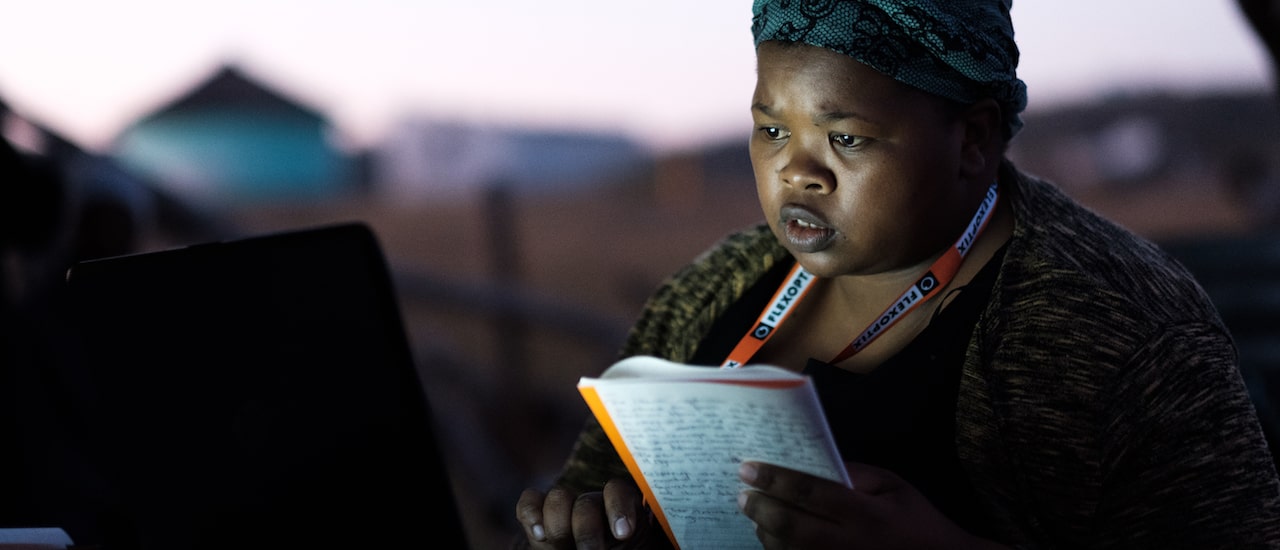For many weeks now, as the pandemic caused by the coronavirus has spread around the world, people have been isolating themselves to reduce the spread of infection. Businesses and schools have closed, and whole cities have been ordered to stay indoors. People’s livelihoods have disappeared, and of course, far too many people have been critically ill or have died. It is a calamity. Yet it would be much worse, if it were not for the Internet.
It’s enabling life to go on. Businesses and schools are able to continue their core activity online. People are able to order food and medicine delivery to lower the risk of contagion. Families are video conferencing to catch up, worship, and even attend weddings. Creators are streaming music and stories from their homes. Clinicians and researchers are sharing crucial medical data worldwide. Everyday citizens, remarkably informed, are trying to flatten the curve.
This is what the Internet is for: a force for good in society.
Resilient by Design
The Internet is working well under this sudden demand because of how it is designed. Nearly magic, the Internet is designed to be a reliable system built of unreliable parts. This might sound awful, as though it only works by accident, but it’s actually engineering genius. The Internet is a complex, reliable system that can be repaired with things that are inexpensive and ready to hand, which means that it will work under unexpected strains. Some have been worrying about whether the Internet can “stand up” under a heavy, widely distributed load. As long as the Internet’s myriad networks have been built with sound engineering, they will hold up. Despite all the media streaming and video conferences, measurable reports of trouble have been remarkably rare. The design works!
Just over a year ago, we celebrated that a little over half the world’s population had access to the Internet. But what of those who don’t? They are often those with the fewest resources, the fewest advocates, and the biggest troubles. Yet all the unconnected deserve the chance to be connected if they want to be. We should not be shy about closing the gap in multiple ways.
We should deploy access and network-improving technologies according to the need of the communities. This means enabling local communities to take things into their own hands – what the Internet is designed to do – rather than depending on megaprojects or incumbent operators to provide something. Regulation that favor existing players remain in place all over the world, and recent trends have not made that better. We must make sure that people everywhere have the skills and knowledge to build and maintain their networks and services in the best ways we know.
Bumpy Last Mile
Of course, not every network has been built the best way, and this is true everywhere. Some access networks – what people get from a home network connection, for instance – have too many subscribers given the promised bandwidth. Sometimes, mobile bandwidth is massively oversubscribed. Home network gear is often not really as good as it might be, and it is not usually installed professionally, so it does not work as well as it theoretically could anyway. These are shortcomings because they affect people connected through inadequate network, whether that means their local Internet service provider (ISP) or even the network at home. And the Internet’s design helps because fixing one issue provides immediate benefit.
Unfortunate Anomalies
Some networks are unreliable by design. Governments and regulators sometimes prevent robust network designs on purpose:
- Some require data always to remain in-country – often officially for “sovereignty” and too often really for censorship – so the most efficient network path is not always possible.
- Some require a small number of (usually inadequate) connections to the rest of the world, to ensure it is possible to perform a “shutdown;” so a fast network in-country struggles to get international traffic through the slow lines.
- Some insist on controlling or otherwise dominating the policies of local Internet Exchange Points (IXPs), driving away big social media and streaming companies who have a lot of content.
- Some indulge in frequent total or partial shutdowns of the network, thereby discouraging investment and scaring off large providers of content who don’t want to lose control of their systems for weeks at a time.
- Many governments attempt to restrict, weaken, or undermine encrypted communications in the name of security, even though the prospect of talking to our doctors or banks without the protection of strong encryption ought to terrify everyone.
Every one of the above is a self-imposed harm. Each could be countered by building the best technical infrastructure we know how to build. That ought to be the shared goal not just of technical people, but of everyone – civil society and politicians included. If the Internet is really how we will cope with major calamities like COVID-19, then we had better be sure the Internet is strong and accessible for everyone.
This global health crisis shows us just how much we need the Internet. Sure, it can amuse us with videos of cats or everyone’s latest baking project. But it can keep billions employed, children learning, and quite literally save people’s lives. We need to keep growing the Internet and to making it strong. Let us ensure the Internet is open, globally connected, secure, and trustworthy. Then we can be sure it is for everyone.
Photo of a participant during the Third Summit on Community Networks in Africa ©Internet Society/Nyani Quarmyne/Panos Pictures

